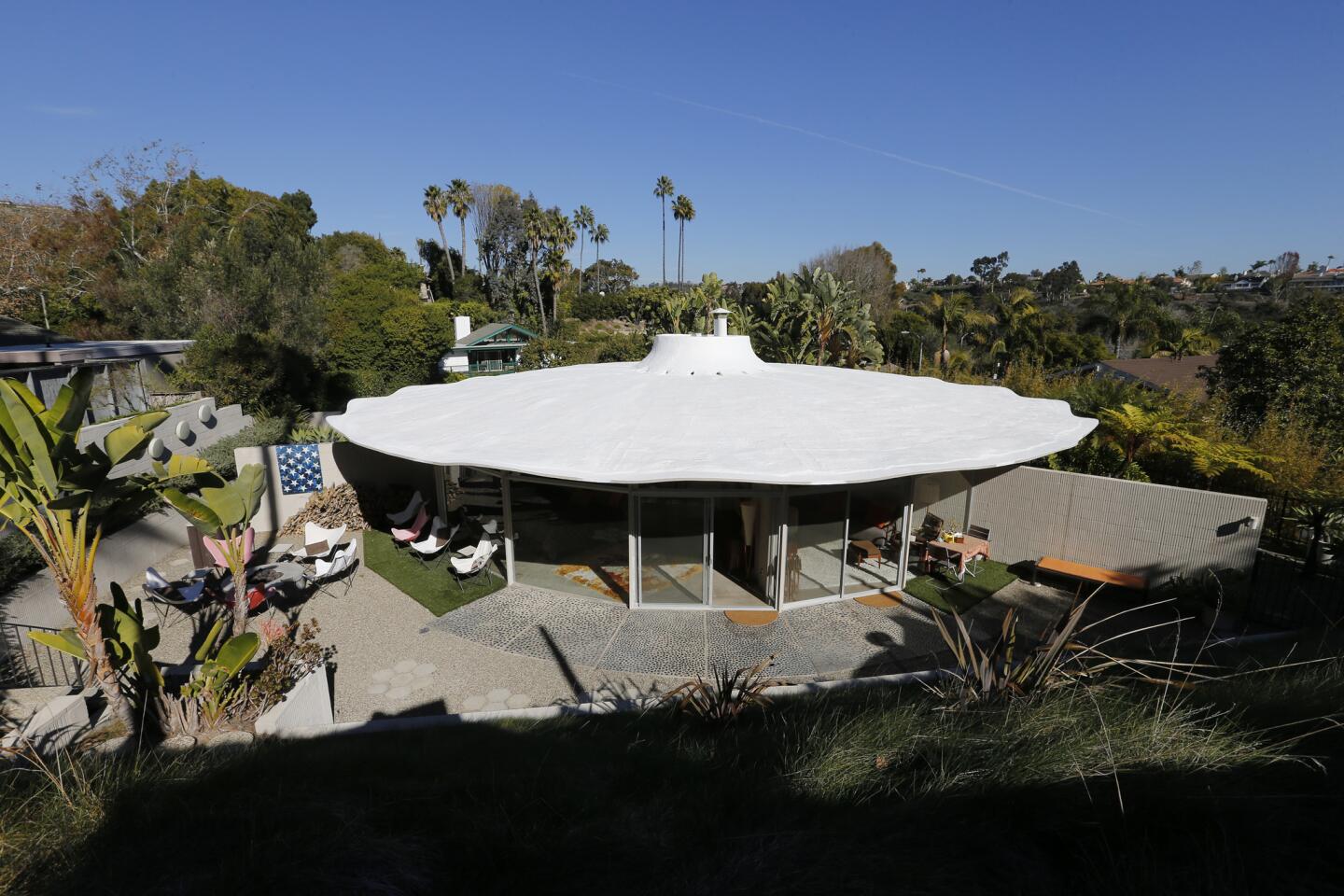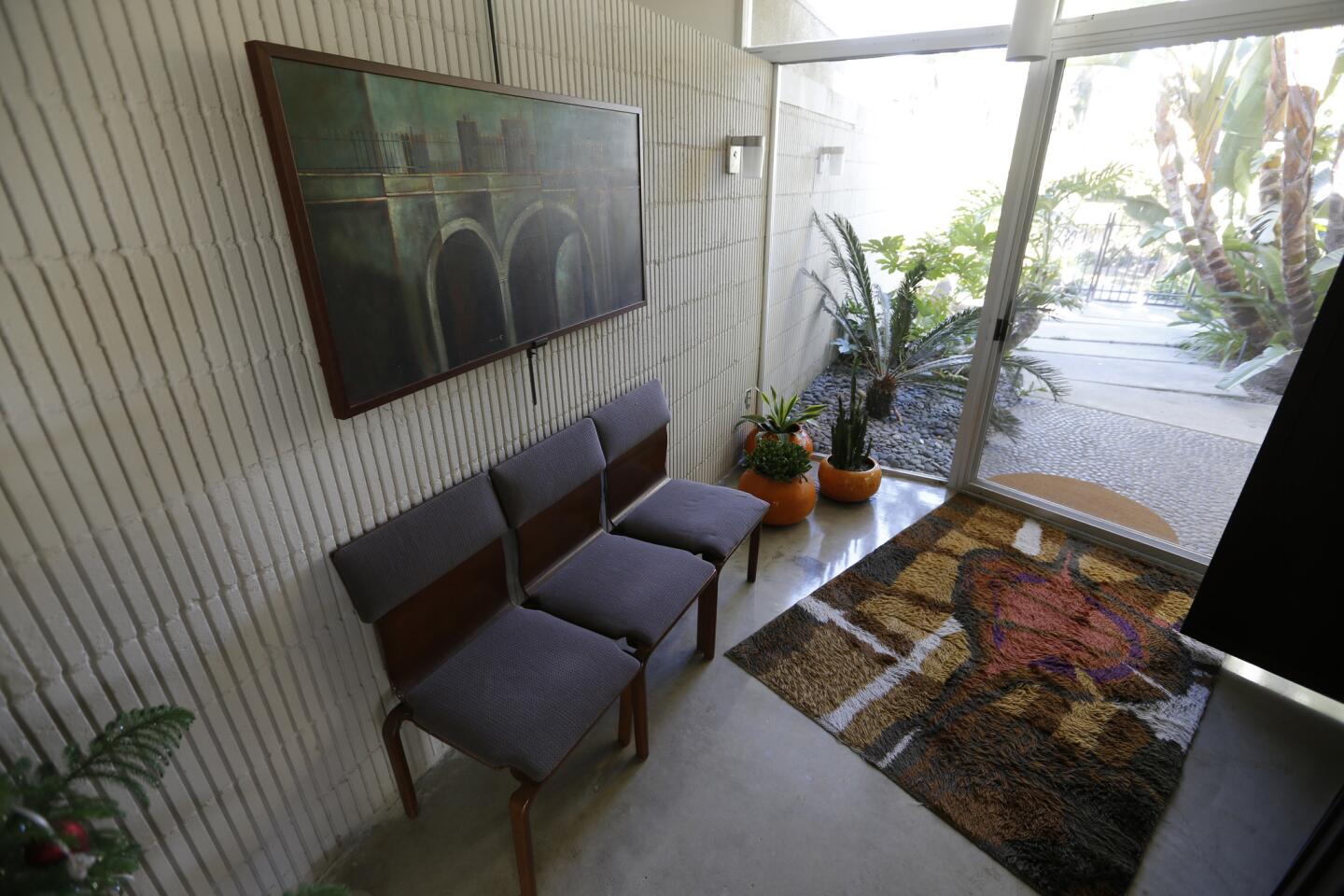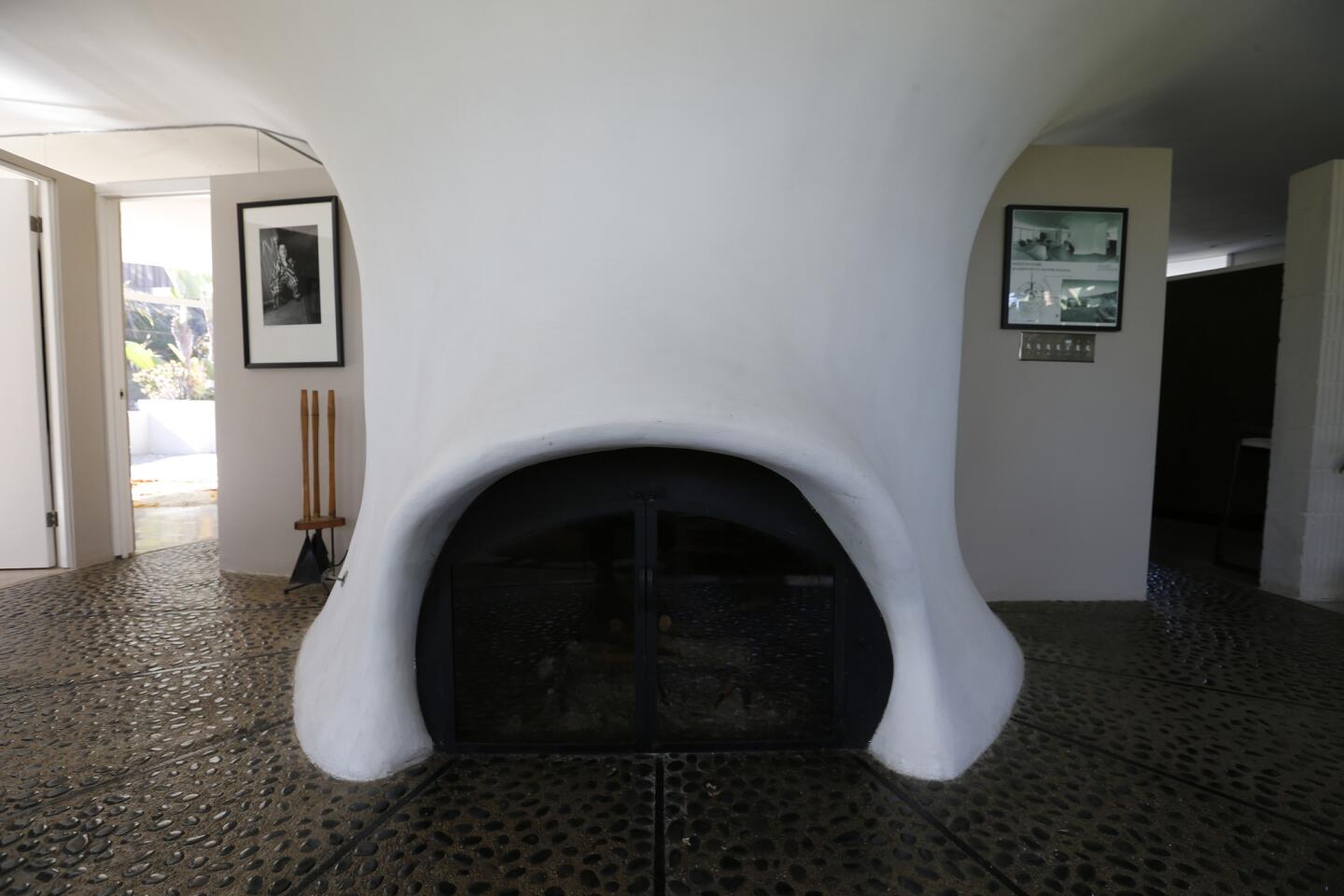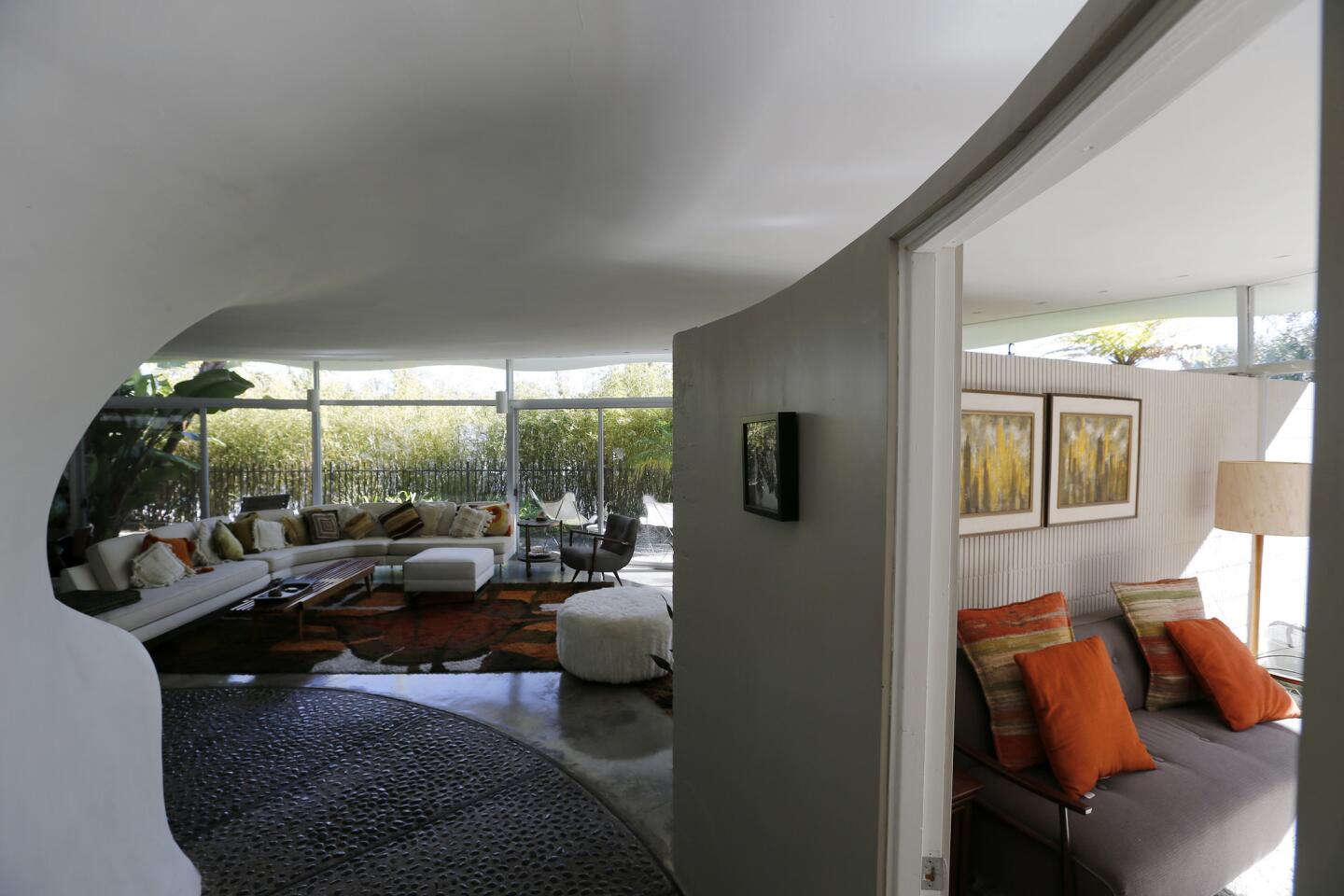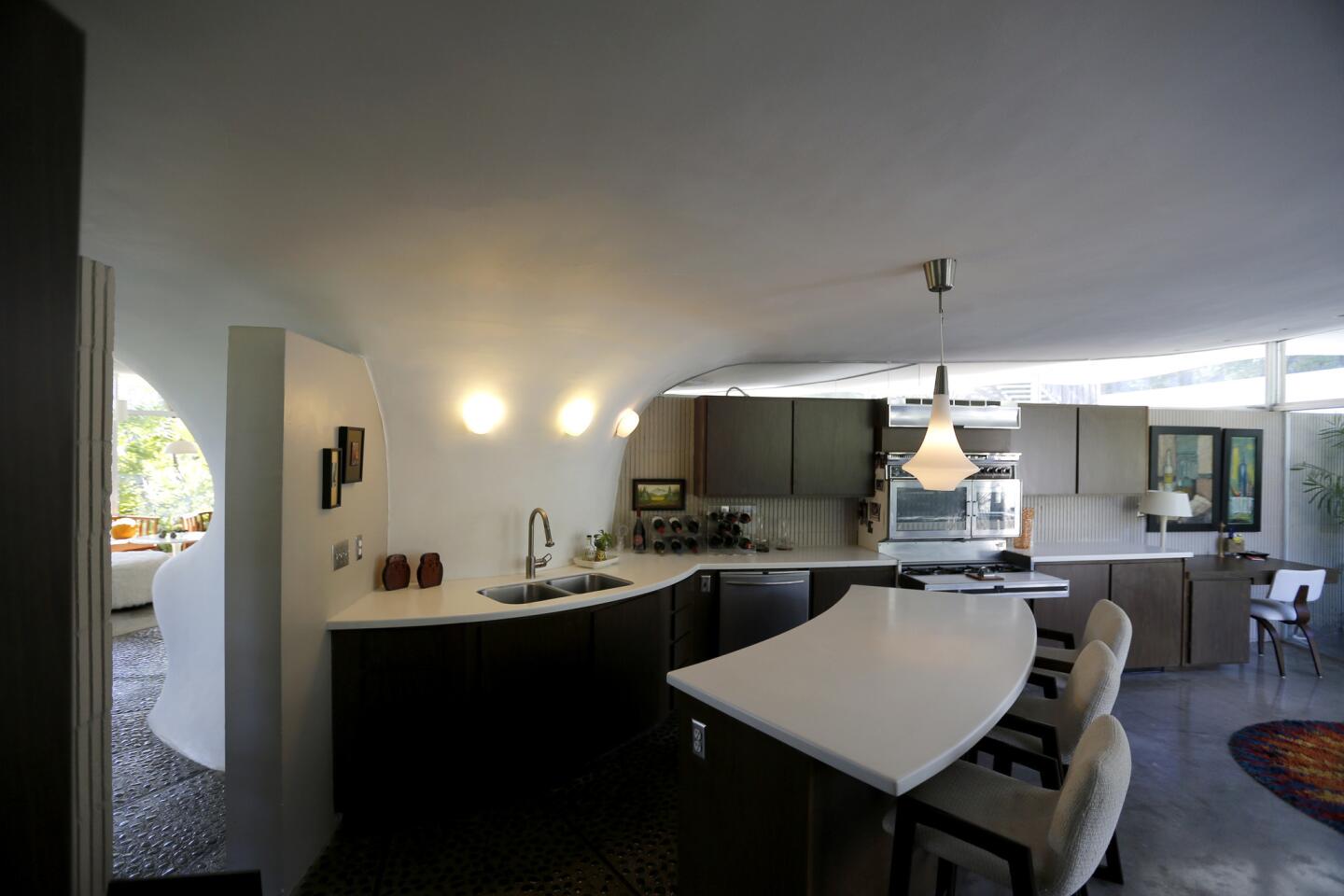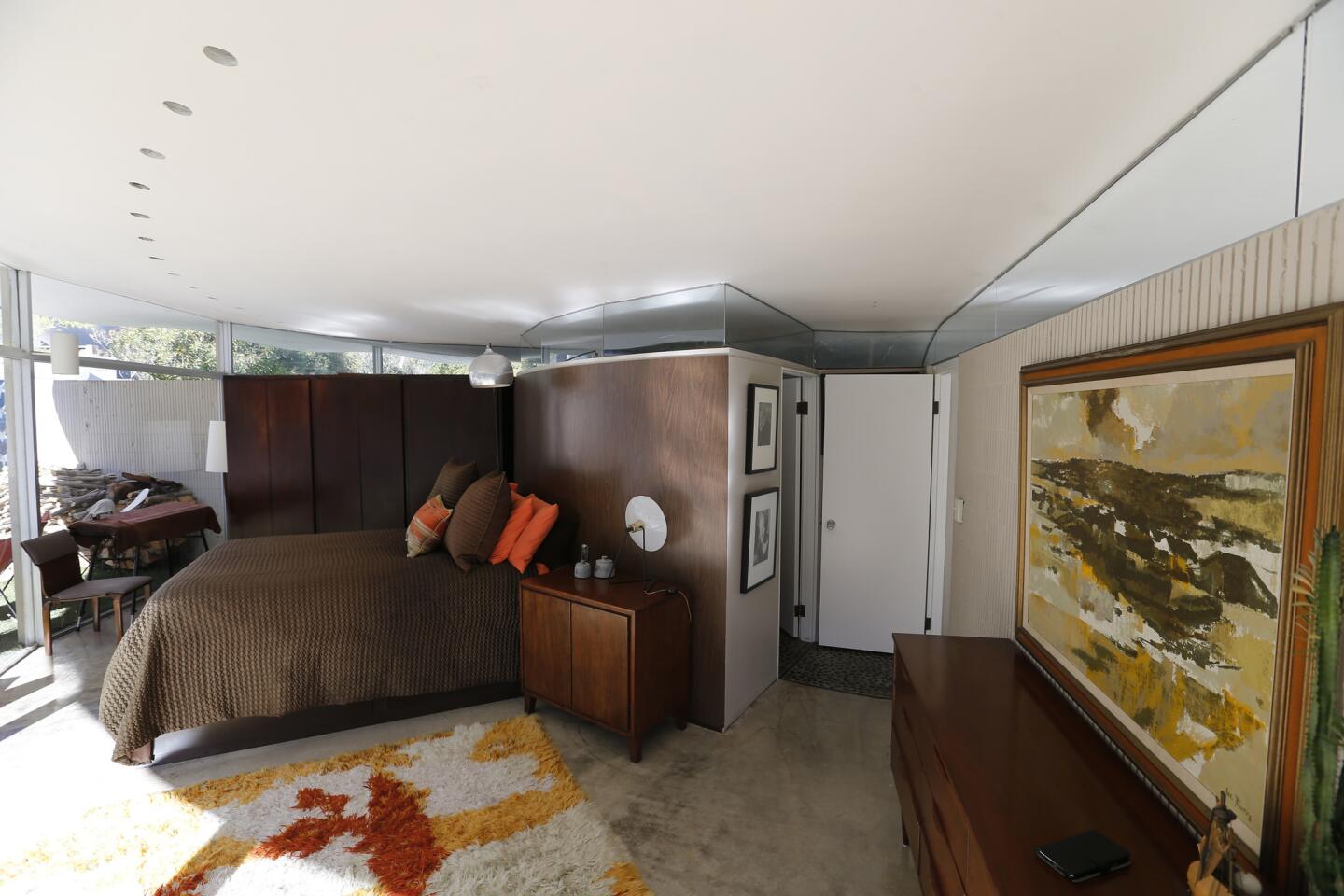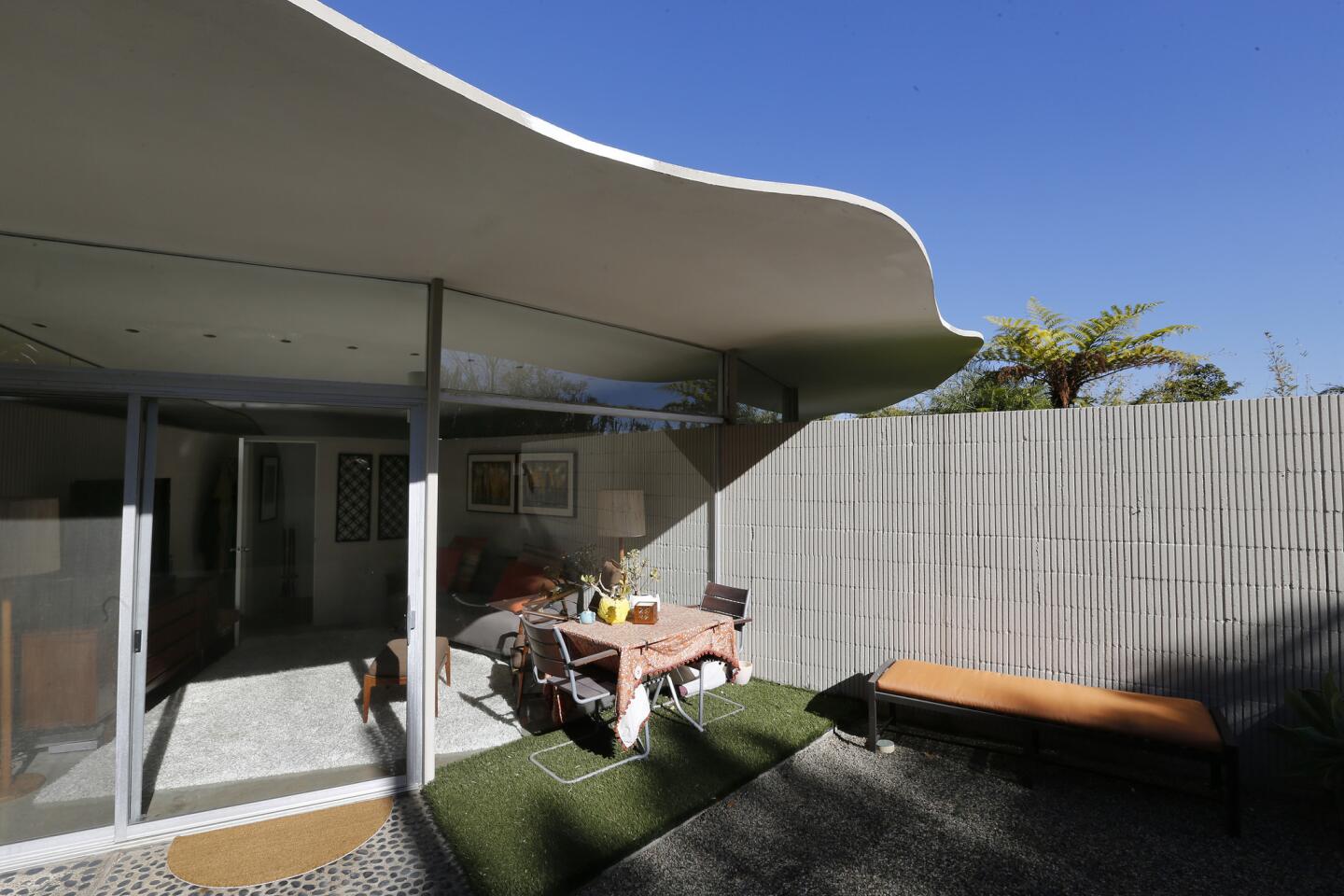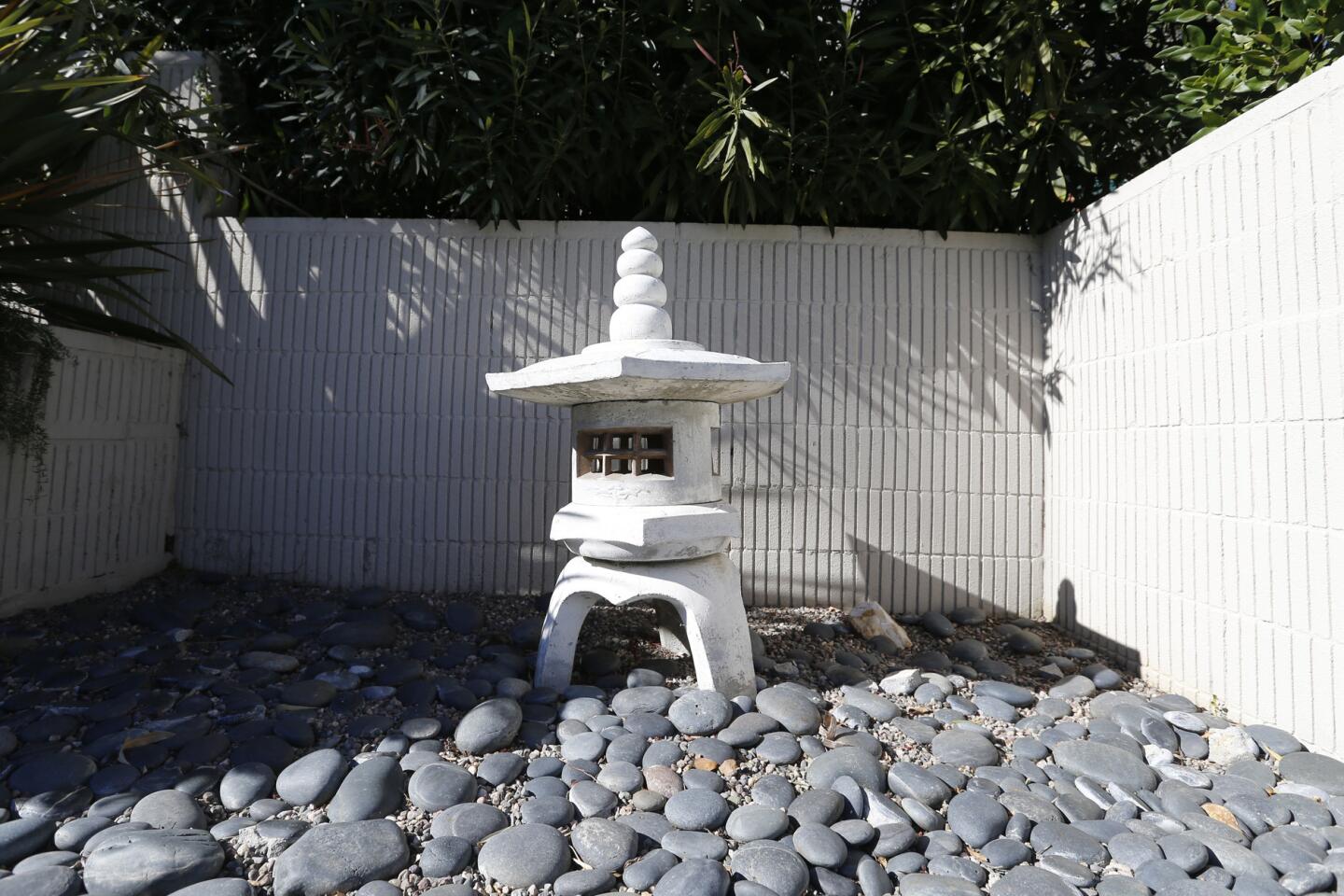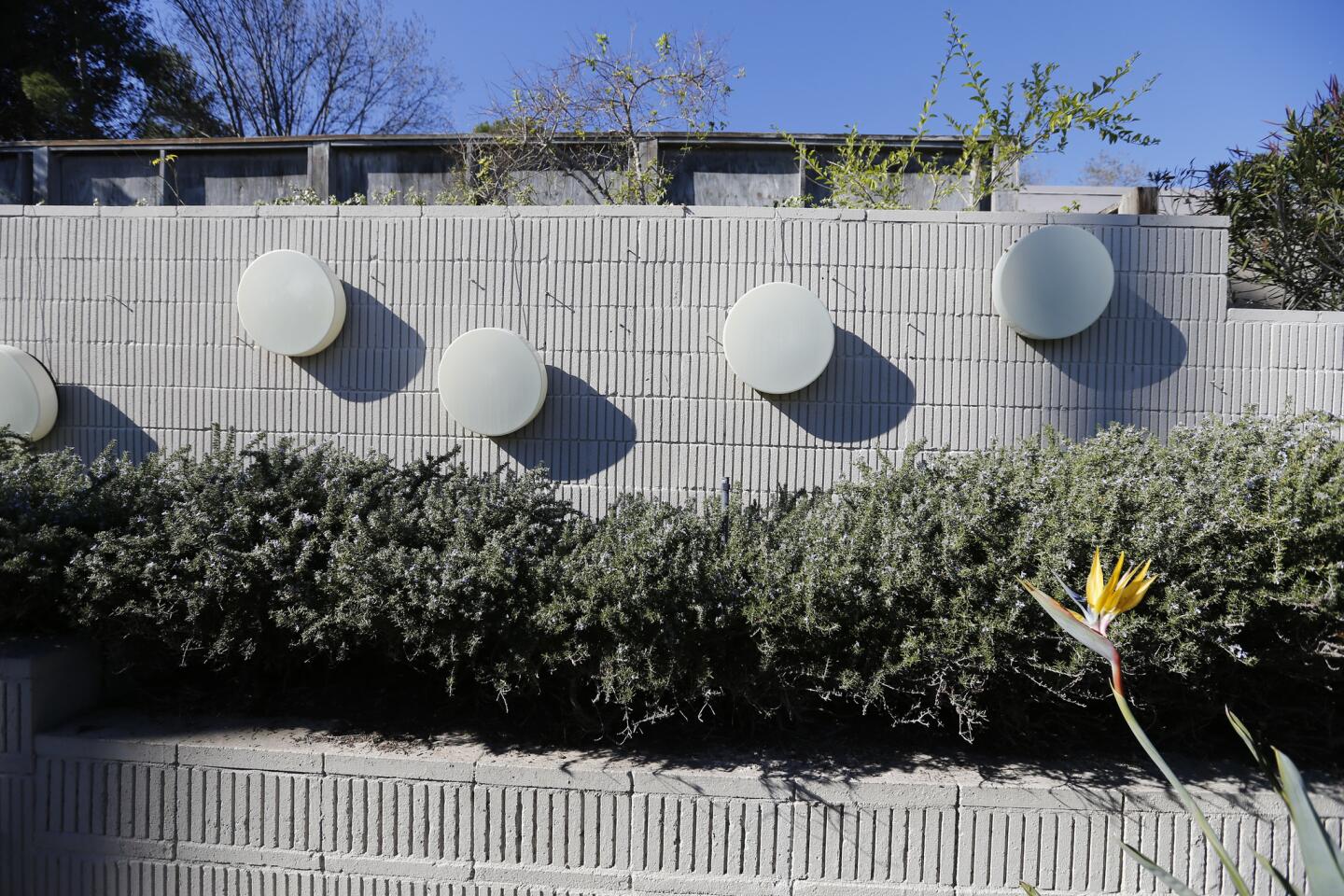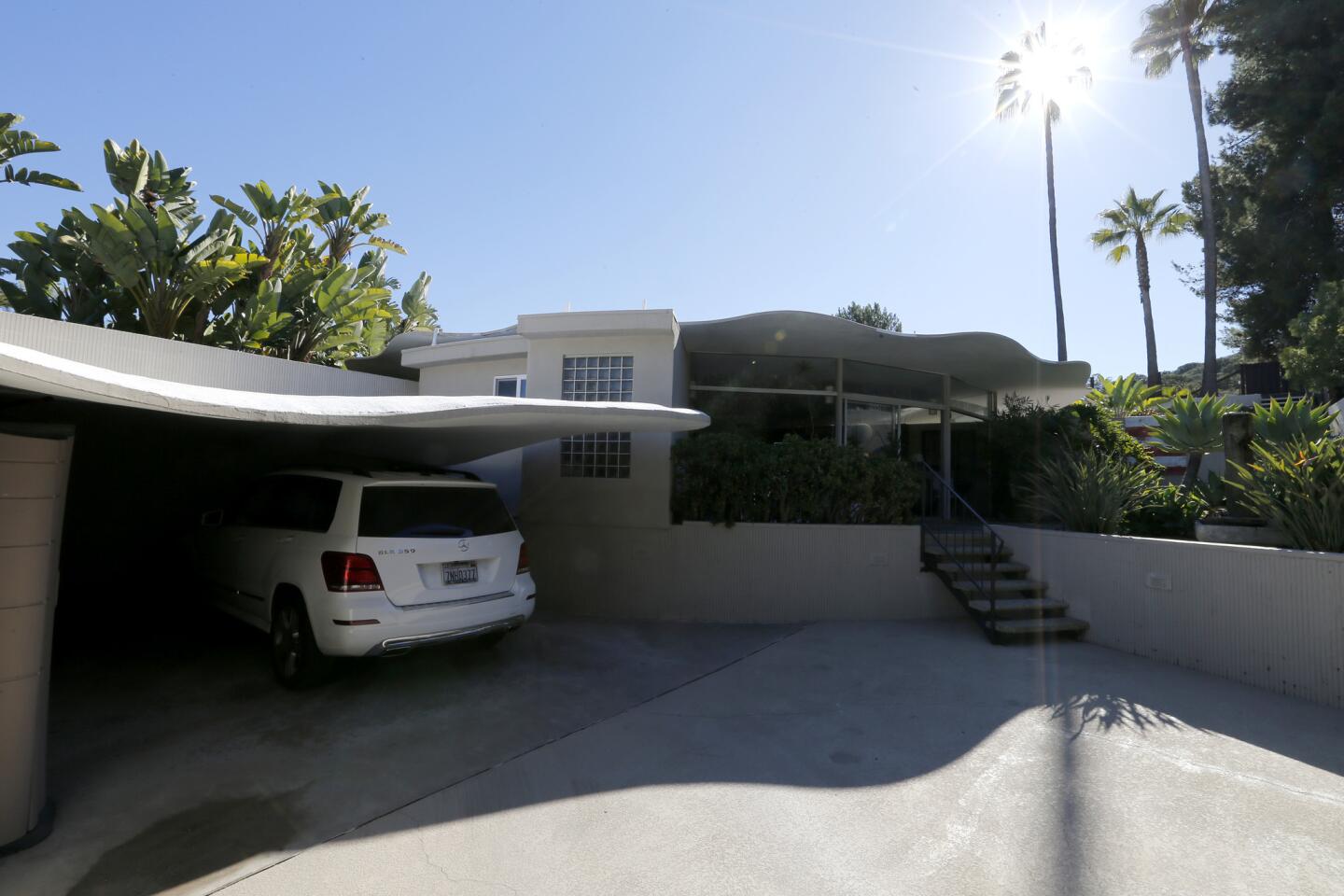Photos: This futuristic SoCal house is shaped like a pie and made entirely out of concrete
Many midcentury aficionados are familiar with the Case Study Houses sponsored by Arts & Architecture magazine (1945-62), which commissioned major architects of the day — Charles Eames, Raphael Soriano, Richard Neutra, to name a few — to build inexpensive and efficient model homes. Pierre Koenig’s Case Study House No. 22, which cantilevers over the Hollywood Hills, has become a Los Angeles landmark, and 10 of the 36 proposed Case Study Houses are listed on the National Register of Historic Places.
Much less known is the Horizon Homes program, which was sponsored by a nationwide association of cement companies in the early ‘60s. Their goal: to show how a house could be built inexpensively with concrete, as well as to promote creative new ways to use the product. In the process, scores of progressive home designs that utilized exposed concrete and masonry exclusively in the construction were created.
------------
FOR THE RECORD
Jan. 20, 8:33 a.m.: An earlier version of this post said that a Horizon home designed by architect Fred McDowell was owned by ceramicist Harrison McIntosh. The Claremont home described was never owned by McIntosh.
“Both programs had goals of building innovative and inexpensive housing,” says Laguna Niguel author Ted Wells, whose book, “Horizon Homes: Living the Concrete Dream,” is to be released this year by Guardian Stewardship Editions. “They each succeeded in producing some outstanding homes, but both failed in cost effectiveness related to production.”
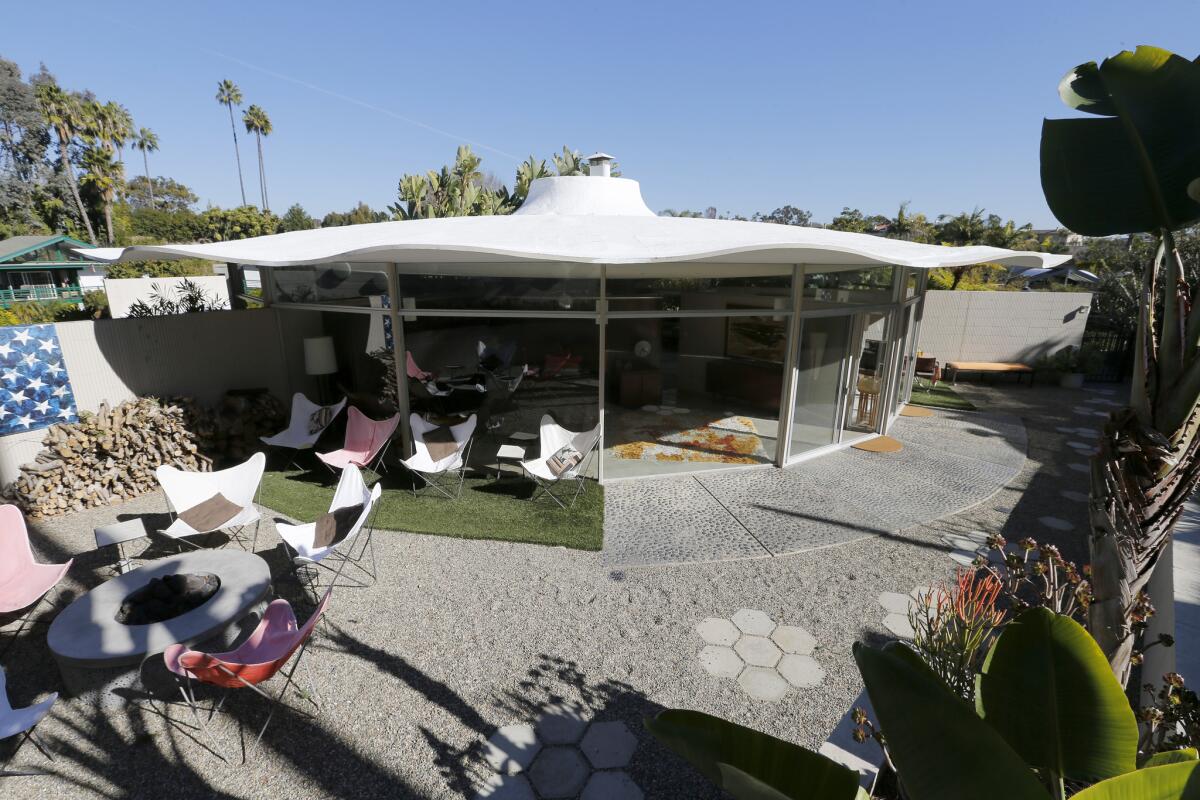
The house has a pie shape, a cantilevered roof and a wall of glass forming the perimeter.
Just when midcentury enthusiasts thought they knew everything there was to know about the movement, the book — and the conversations it will inspire — will offer fresh information and insight on an overlooked part of the perennially popular movement. “It will illustrate another aspect of how creative Midcentury Modern architects were,” says Wells.
According to the author, 11 Horizon Homes were built in Southern California. One has been lovingly restored by aerospace executive Einar Johnson and his partner, silk scarves importer Pat Gough. (The couple, big fans of Midcentury Modern, also own a 1962 Ray Kappe home in Los Angeles.) Johnson was looking online for another home closer to his new workplace in Irvine in 2004 when he spied architect George Bissell’s futuristic-looking 1964 Laguna Niguel residence. He was intrigued by the round dwelling, with its pie shape and cantilevered concrete roof as well as the uninterrupted wall of glass that forms the perimeter of the house with every room opening to the outdoor landscaping and views.
See the most-read stories in Life & Style this hour >>
It took two years for the couple to restore the two-bedroom residence. Their most tedious chore was removing the faux brick that covered the original vertical-ribbed cinder block in the kitchen. “All the grooves had been filled in with a binding agent,” Johnson says. “It had to be chipped out bit by bit.” They also refreshed the interior with a coat of matte white paint, including the living room’s focal point — a sprayed-on “shotcrete” fireplace, hand-finished into a free-form, organic shape. “It’s so smooth — visitors can’t take their hands off it,” says Johnson, who likes the low maintenance of the concrete home. “We’ve yet to have any cracks in the concrete roof or walls — all it needs is a coat of paint every few years.”
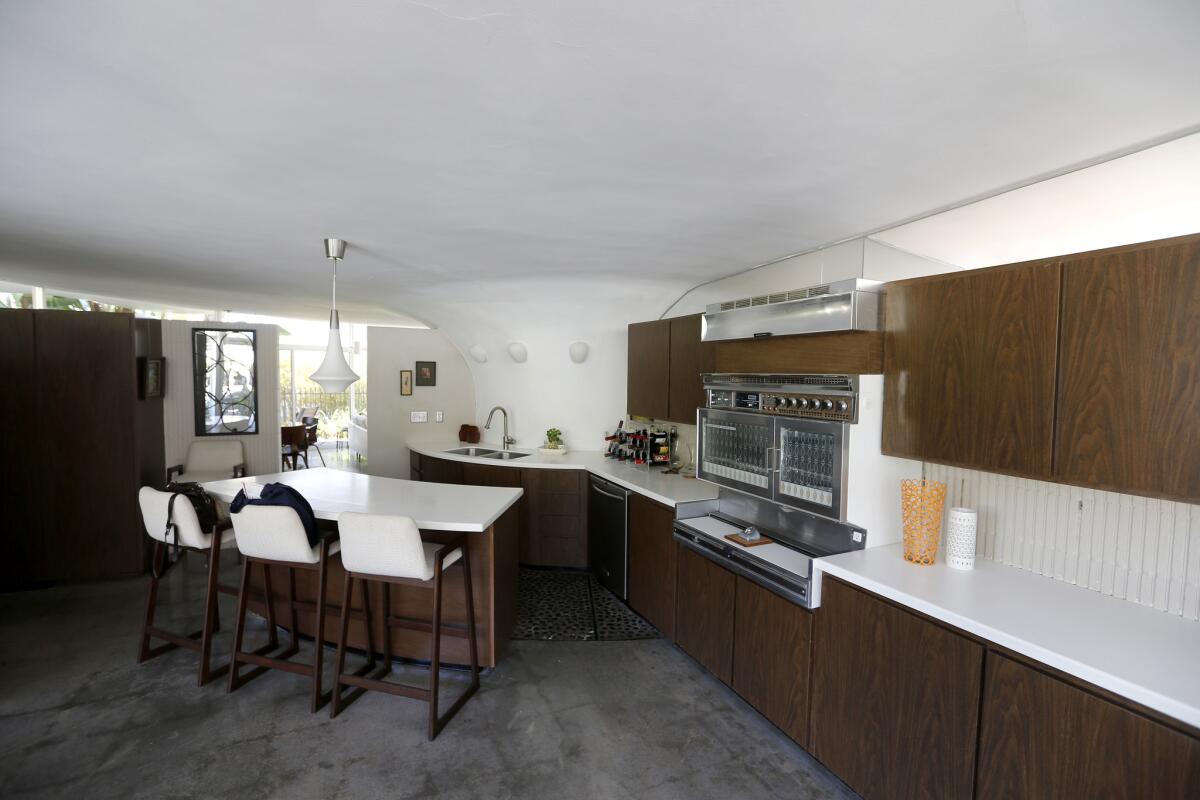
The most tedious part to renovate was removing the faux brick that covered the original vertical-ribbed cinder block in the kitchen. “All the grooves had been filled in with a binding agent,” Johnson says. “It had to be chipped out bit by bit.”
Another Horizon home, designed by architect Fred McDowell in the ‘60s, was included in a 2011 LACMA retrospective — “California Design 1930-1965: Living in a Modern Way.” The hillside house in Claremont, a regional winner of the Portland Cement Assn.’s 1964 Horizon Homes competition for “its unusual use of glass and cement,” features a horizontal façade of glass panels and cast concrete columns, rafters and beams. Cement elements, cast elsewhere, were helicoptered onto the narrow site, according to Claremont Heritage, and over the years survived several significant fires that destroyed a number of nearby homes.
According to structural engineer Hanns Baumann, who consulted on the Bissell home, concrete is one of the best building materials. “Concrete is nonflammable and is good at withstanding earthquakes and hurricane force winds,” says Baumann, a principal in Baumann Research and Development Corp. in Orange County. “Initially building in wood might be cheaper, but then you may have rot and termite problems down the road. Concrete homes have a much lower maintenance cost and longer life.”
Although there were more than 150 homes built across the country as part of the Horizon Homes program — “many of which are still fresh and futuristic today,” says Wells, “concrete homes did not really take off to the degree anticipated. The houses were too different and most lenders didn’t want to finance anything modern.”
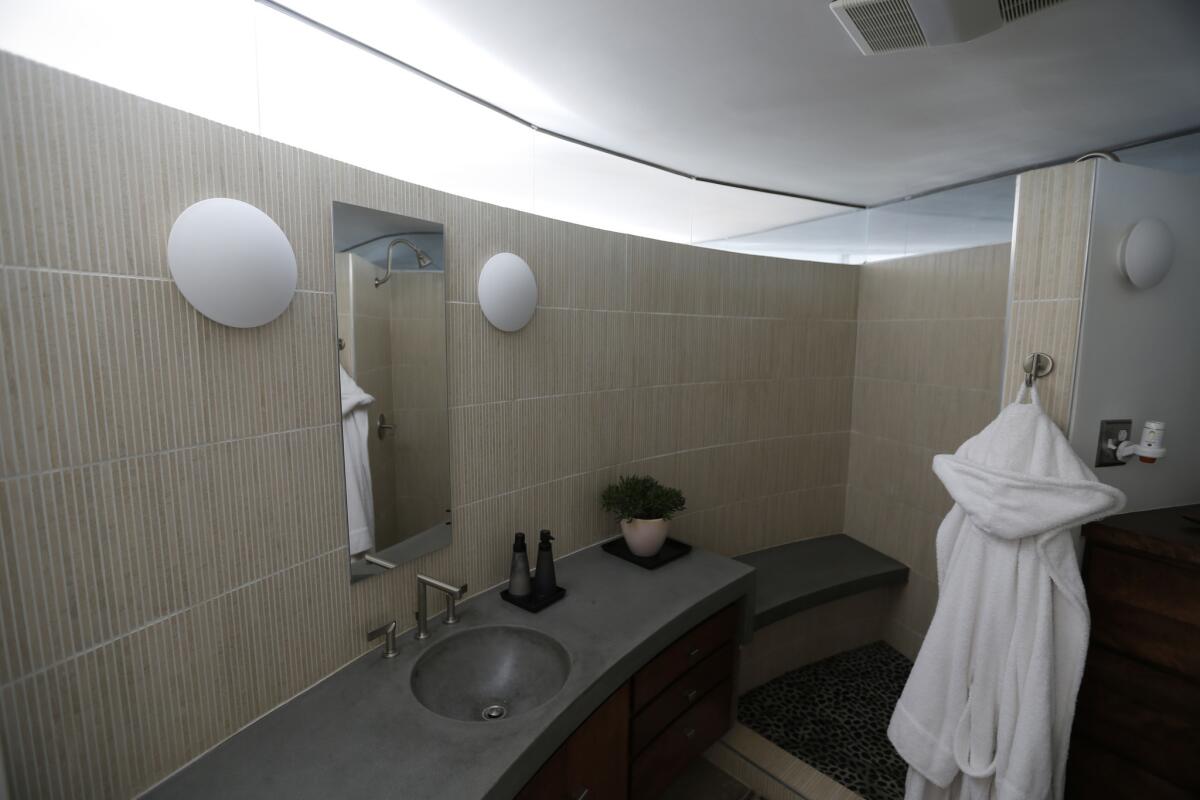
Bathroom of Einar Johnson and Pat Gough’s Horizon home in Laguna Niguel.
Still, homeowners such as massage therapist Morgan Mancha and marketer Andrew Trinh, who purchased a Horizon home in Riverside in 2012 but had never heard of the program, have become enthusiasts. They praise their home for staying cool on hot summer days. The home built by Kurt Steinmann in 1963 is also very quiet. “When there are loud noises outside we don’t hear them.... It’s like a fortress,” says Mancha. “We have other friends with midcentury wood homes that have termite issues.... With a concrete home, we’ll never have to worry.”
MORE HOME TOURS
Just 960 square feet: A 1925 bungalow gets remodeled for a growing family
A termite-ridden garage in Venice Beach is turned into a private video art gallery
Inside a Palm Springs getaway that’s modern, hip -- and still kid-friendly
